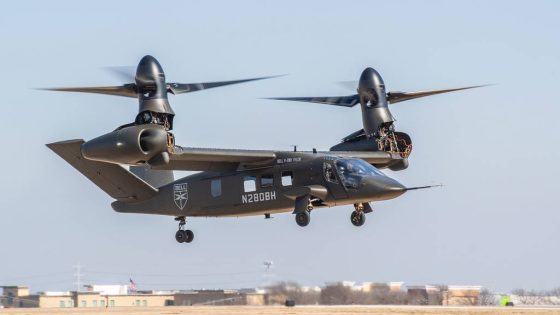DENVER â The U.S. Armyâs plan to field its Future Long-Range Assault Aircraft with an initial unit is delayed by one year, due to Lockheed Martinâs protest over the serviceâs choice of Textron Bellâs advanced tiltrotor design, according to the director of Army aviation in the serviceâs G-3/5/7 branch.
The FLRAA competition pitted Bellâs V-280 Valor against Sikorsky and Boeingâs Defiant X, which features coaxial rotor blades. Bell is a subsidiary of Textron, and Sikorsky a subsidiary of Lockheed Martin.
The Army chose Bellâs design in late 2022, and Sikorsky filed a protest following the decision with the Government Accountability Office. The GAO rejected the protest in April 2023.
Despite the protest disruption, âwe are working steadily on [the program], and I will say that the team came together this past quarter and did a tremendously detailed plan to look at every aspect of this fielding,â Maj. Gen. Wally Rugen said at the Army Aviation Association of America summit, running April 24-26.
The Army will now equip the first unit with the capability in fiscal 2031. But that milestone is ânot our pacing decision point,â Rugen said. âWe really have to look to the limited user test in â27-â28.â
âThere are captains, majors, first sergeants and [warrant officer] 2s and W3s [that will] be participating in that with our experimental test pilots to make sure that the operational force sees this capability for what it is â truly transformation â and get the reps and sets needed to make that [first unit equipped] highly successful,â Rugen said.
Meanwhile, Bell is working on the preliminary design of the Future Long-Range Assault Aircraftâs production version, Jeff Schloesser, the companyâs executive vice president of strategic pursuits, told Defense News at annual AAAA event.
The design work is âcriticalâ because it will be necessary for the program to enter Milestone B â the engineering and manufacturing development phase â in the third quarter of 2024, Schloesser said, and then FLRAA will become an official program of record.
The design will not change much from the demonstrator version of the aircraft, Schloesser noted, but there have been some adjustments to outer mold lines, for instance.
Bell is also delivering two virtual prototypes over the next 12 to 24 months, Schloesser said. âYou should probably think about it as a small simulator, outfitted the way the aircraft is going to look inside for production aircraft,â he explained.
Bell has also started building a weapon systems integration lab next its flight research center in Arlington, Texas. âWeâre starting to populate that with the systems that we will run â and [the Army] will overwatch â as we go through all of this against the weapons systems. Itâs not just the flight controls, itâs the actual weapons system,â Schloesser said.
The company also built a new drive system test lab in Grand Prairie, Texas, because Bell builds its own drive trains.
Parts for the first six aircraft are also coming together. âWeâre bending metal for the first several aircraft,â Schloesser said. âAnd we are also simultaneously completing all the contracts with our suppliers ⦠and we are ordering long lead-time materials.â
The Army will receive the first aircraft in 2026, Schloesser said.
Bell is also in the process of deciding where some manufacturing and production will take place, Schloesser noted. While final assembly will take place in Amarillo, Texas, Bell is looking for production sites for drivetrains and rotor blades. âWe are looking at a couple of different states and ⦠in Texas,â Schloesser said.
The company plans to announce the establishment of production facilities later this year, he added.
Jen Judson is an award-winning journalist covering land warfare for Defense News. She has also worked for Politico and Inside Defense. She holds a Master of Science degree in journalism from Boston University and a Bachelor of Arts degree from Kenyon College.
Source Agencies



